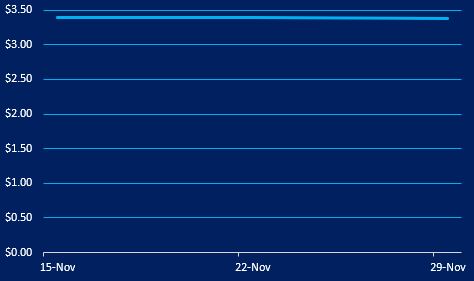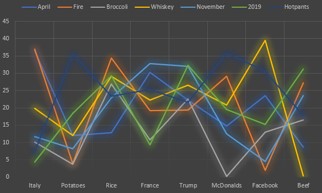The Democratic Congressional Campaign Committee (DCCC) has compelled me to violate my own rule about not embedding tweets. Second time in a week that’s happened.
Before we get to the tweet, let’s clarify a few things: the DCCC is an explicitly partisan organization. In their own words (from the “About Us” page of their website), the DCCC is “the only political committee in the country whose principal mission is to support Democratic House candidates every step of the way to fortify and expand our new Democratic Majority.”
As a campaign organization whose goal is keeping the U.S. Congress in Democratic hands, the DCCC is obviously not beholden to the standards of ethics and fairness we apply to our broken news media.
One can’t criticize them for hyperbole or misrepresentation: that’s their job.
And a miserable job it must be, right now: Congressional Democrats are a dead man walking.
Even so, the tweet they fired off yesterday may be one of the saddest bits of political spin I’ve ever seen.
It’s sad because it’s almost impossible not to read it as sarcasm.
The same exact tweet—same graphic, same wording—could have been tweeted out by Republicans. And by now it probably has been. (This isn’t the kind of blog where we go diving into ratios and retweets and comments: we have a general principle of Twitter delenda est.)
I’ve illustrated this type of numerical prestidigitation before: notice that the y-axis (the one on the left) has a range from $3.375 to $3.415. The charted values don’t even need all that cushion: they only range from $3.40 to $3.38.
It looks like quite a descent on that chart, but let’s see how it looks with a y-axis that begins at 0:

That’s the same data, and it ought to give you a better sense of the ultimate truth of the matter: a two-cent drop in the price of $3.40 gasoline represents a decrease of 0.5882%.
It’s essentially invisible to the naked eye.
Thanks, Joe Biden!
The DCCC is just trying to play the cards it’s been dealt. They’re lousy cards, as you can see in this chart I was able to pull off the St. Louis Fed’s website. (I’m not trying to be deceptive with the data: there’s just no option for forcing the x-axis to begin at zero):

The arrows are something I added myself: the first is pointing to Election Day 2020, the second to the day Joe Biden was sworn in as president.
So it’s not just that the DCCC has been dealt a bad hand: its tweeters are also exceptionally bad card players.
Here’s why:
If we’re generous enough to say gas was running at about $2.20 per gallon when Joe Biden was elected, the fact remains that the rise to $3.40 represents an increase of 35.29%.
Now that gas is down two cents, to $3.38, that increase has been reduced to just 34.71%.
In giving credit to Joe Biden for the two-cent drop in gas prices from the 15th to the 29th of November, they’re tacitly acknowledging that presidential policy can steer gas prices.
Meaning they’re inadvertently saying that Biden is responsible for the 34.71% price increase since he was elected (or the 29.41% increase since he was sworn in).
Thanks, Brandon Joe Biden!
If you keep bringing the price down by a penny per week, it’ll only take two more years to get it back where it was on Inauguration day.
Of course, that means gas will only be about fifty cents cheaper on election day 2022. Voters would therefore still be paying about 15% more at the pump than they did when Biden took office. That’s probably not enough to make or break things for the Democratic majority, but it’s certainly not going to help.
So maybe the DCCC really was being sarcastic.
But let’s put all the specifics aside and focus on the real questions:
Is the DCCC genuinely stupid enough to believe this two-cent drop on the heels of a $1.20 increase is something to get excited about?
Does the DCCC actually believe Americans are stupid enough to believe it is?
Most frightening of all: are Americans indeed stupid enough to believe it?
